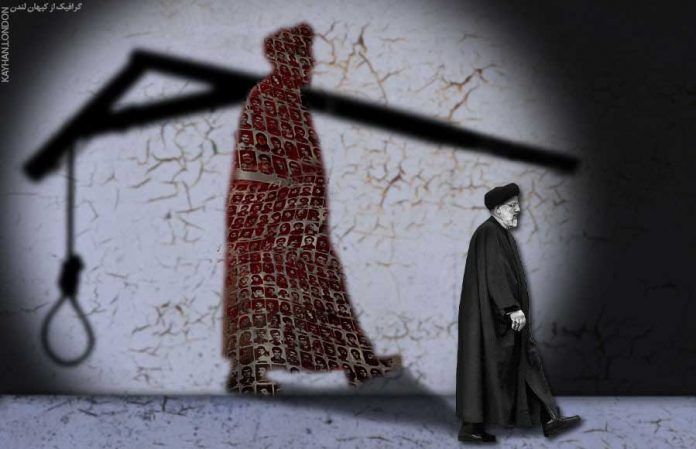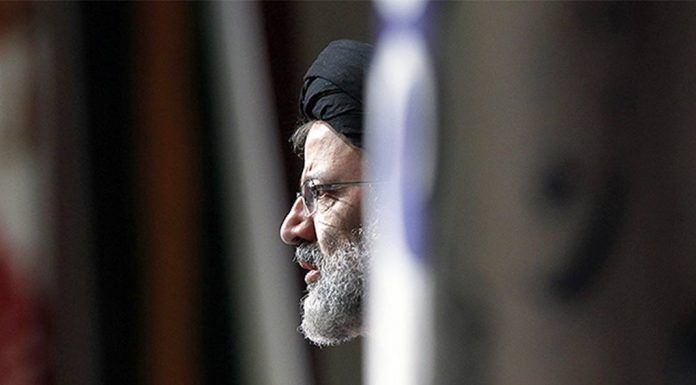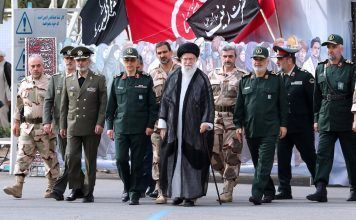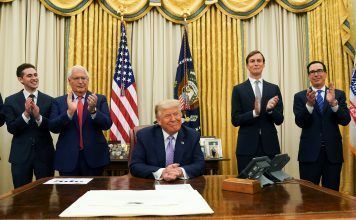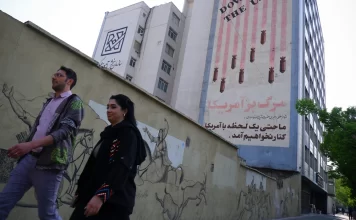President Ebrahim Raisi formed Iran’s 13th government soon after coming into office last August with the slogan of “people’s government; a strong Iran,” but he and his cabinet have failed to address the nation’s concerns or strengthen the country.
A review of the current administration’s performance in the past year shows that it is as ineffective as all previous governments, which in the past four decades have mismanaged the country’s economy and domestic and foreign policies to the detriment of the Iranian people.
In the past year, Mr. Raisi and his ultra-conservative administration have implemented measures that restrict social and cultural activities and curb the individual and civil rights of the Iranian people. He has followed in the footsteps of his predecessors of the past 40 years, whose policies never matched their campaign slogans and whose performance fell way short of their promises.
Despite the repeated declaration that his government was “determined” to solve the country’s problems through “jihad” and “revolutionary” measures, Raisi and his administration have yet to show any concrete results in improving the social, political, and economic conditions of Iran.
For instance, the government deepened the financial crisis by eliminating the “preferred foreign exchange rate,” which it hailed as a “revolutionary” tactic to perform an “economic surgery.”
An organized campaign by Islamic Republic hardliners and the inevitable political demise of the reformists marked the weeks leading to the presidential election in June 2021.
Despite their efforts to scare people at the prospect of Raisi winning the presidency, and the public outrage at the blatant disqualification of their hand-picked candidates, the reformists could not mobilize the electorate to turn up at the ballot boxes and legitimize the Islamic Republic’s rule, which ultimately resulted in them getting fewer votes than the ones discarded as spoiled.
Because of their humiliating defeat in the elections, and not wanting to be deprived of the benefits and advantages of being part of the state’s power structure, the reformists rushed to congratulate Raisi on his landslide win. The Tehran-based reformist newspaper Aftab-e Yazd’s front-page headline was “We Salute Raisi.”
After losing power to the ultra-conservatives and realizing that they had to work with the new administration for at least the following four years, reformists rushed to get on the good side of the hardliners by acknowledging their authority and power.
Several prominent reformist politicians even attended a dinner in honor of President Raisi.
They included Ali Motahari (former member of parliament, described as liberal-conservative or conservative-reformist), Majid Ansari (who served as President Hassan Rouhani’s vice president for legal affairs), Mohsen Hashemi-Rafsanjani (former chairperson of the Tehran City Council), Mohammad-Ali Abtahi (who served as President Mohammad Khatami’s vice president for legal and parliamentary affairs), Hossein Marashi (who served as President Mohammad Khatami’s vice president and the head of the Cultural Heritage, Tourism and Handicraft Organization), Saeed Laylaz (professor of economy at Shahid Beheshti University), and Shahabuddin Tabatabaei (journalist and member of Hezb-e Neday-e Iranian).
While reformists have secured no cabinet or senior government posts in the past year, they have maintained widespread influence in the country’s political and economic spheres.
Despite their public clashes, reformists and conservatives have sided on crucial domestic and foreign policies. It is, therefore, not surprising that one of the most noticeable slogans shouted by protesters during the nationwide protests in the past few years has been “reformists, conservatives, your time is up.”
Ebrahim Raisi reportedly aspired to run for president for years. However, he did not announce his candidacy until 2017, when he received endorsements from the ultra-conservative Popular Front of The Islamic Revolutionary Forces (JMNA) and the Steadfast Front of Islamic Revolution Stability.
Years of waiting, watching, learning, and ultimately receiving support from both wings of the Islamic Republic establishment did not prepare Raisi for running the country. President Raisi’s mindset did not evolve from his days as the head of Iran’s Judiciary, when he managed problems by issuing decrees.
During his election campaign, Raisi repeatedly said that his “reputation and integrity were at stake” when solving the country’s problems. However, his questionable cabinet appointments have further harmed his leadership credibility. There is infighting among the conservatives, many of whom are at odds with the First President Mohammad-Mokhber Dezfouli.
Raisi and his administration have tackled none of the country’s pressing economic problems since taking power last year. Hyperinflation, massive unemployment, shortage of goods, and high cost of living continue to push many Iranians into poverty. Most cabinet members are former members of the Islamic Revolutionary Guards Corps (IRGC), prompting some people to label Raisi’s election an “IRGC silent coup.”
Some observers believe that the current ultra-conservative administration — many of whom are former IRGC commanders in cabinet posts and others in crucial government jobs — has paved the way for Iran’s Supreme Leader Ayatollah Ali Khamenei to pursue his domestic and foreign agenda unopposed. Others argue that Raisi is continuing the policies of former reformist President Hassan Rouhani and his predecessors.
For instance, while reformists have criticized Raisi and his ultra-conservative government for warming up to Russia, President Rouhani and his reformist administration pursued Mr. Khamenei’s “looking to the East” strategy.
[aesop_image img=”https://kayhanlife.com/wp-content/uploads/2021/12/putin-raisi.jpg” panorama=”off” credit=”Illustration/KL./” align=”center” lightbox=”on” captionsrc=”custom” captionposition=”left” revealfx=”off” overlay_revealfx=”off”]
President Rouhani’s government negotiated a 20-year deal between Iran and Russia on developing and mining the Chalous gas field in the Caspian Sea and water reservoirs in Iran’s north, which was ultimately signed in November 2021.
Under the deal, Russian companies hold the major share in the project, despite the Chalous gas field being within the Iranian sector of the Caspian Sea, over which the Islamic Republic has complete sovereignty.
Chalous’s gas reserves are as large as the South Pars Phase 11 conventional gas development, producing 1,000 million Cubic Feet per Day (MMCFD) of natural gas.
President Rouhani’s Foreign Minister Mohammad Javad Zarif and his Chinese counterpart Wang Yi signed a 25-year accord between the two countries in March 2021. Under the agreement, China will invest $400 billion in the Iranian oil, gas, and petrochemical industries for the next 25 years.
Less than 48 hours after the signing of the agreement, some 120,000 people signed a social media petition protesting against “selling” Iran to China.
Raisi’s election campaign focused on President Rouhani’s failure to tackle the country’s economic crisis during its eight years in office. However, Raisi has yet to fulfill any of his campaign promises.
For instance, Raisi promised to stabilize the foreign exchange market, particularly the U.S. dollar exchange rate. According to the government report, rising interest rates have increased liquidity by 40 percent. Liquidity refers to how easily or efficiently an asset or security can be converted into ready cash without affecting its market price. The most liquid asset of all is cash itself.
A recent report by the Statistical Center of Iran (SCI) said the inflation rate for food products rose from 81.6 percent in June to 86 percent in July, a 4.5 percentage point increase in the space of a month. The report listed 53 food products affected by rising inflation in cities across the country, with 37 items experiencing a price hike of 51.4 percent since last June.
The price of liquid cooking oil rose by 332 percent in June, solid vegetable oil by 272 percent, potatoes by 172 percent, pasta by 169 percent, premium Iranian rice by 162 percent, tomato paste by 129 percent, pasteurized yogurt by 127 percent, pasteurized Iranian cheese by 126 percent, egg by 107 percent, and mayonnaise by 101 percent, the report added.
Raisi has also failed to fulfill another of his campaign’s promises, which is to eradicate corruption. There have been several high-profile financial corruption cases against prominent politicians in the past year.
In addition, President Raisi and his ultra-conservative cabinet have systematically restricted women’s individual and civil rights in the past year.
The government has tried to push women out of the workforce, ordered the Morality Police (Guidance Petrol) to enforce the Hijab law aggressively, urged senior managers to enforce mandatory “hijab and chastity” measures in government offices and banks, promoted child marriage, banned female spectators from football matches, arrested female musicians, and withheld all legal, psychological, and financial support to victims of domestic abuse and rape.
In July, Raisi ordered the Supreme Council of the Cultural Revolution to enforce the “Hijab and Chastity Law.” While the hijab became compulsory after the 1979 Islamic Revolution, the Supreme Council of the Cultural Revolution, which adopted the “Hijab and Chastity” measure in 2005, is not a legislative body and cannot pass any laws.
Many of the country’s senior officials have followed President Raisi’s directive, ordering ministries and agencies under their control to enforce mandatory hijab and the “Hijab and Chastity” scheme.
A month earlier, Iranian Minister of Health Dr. Bahram Eynollahi issued a directive titled “Saving and Protecting Healthy Fetus,” banning prenatal screenings for pregnant women younger than 35 whose previous children were born with no genetic disorder or Down syndrome.
The Health Ministry’s guideline restricts medical insurance coverage and poses a severe challenge to families, especially the poor and the disadvantaged, who cannot afford the cost of screening tests. Many poor pregnant women cannot undergo screening tests to determine if their baby has any genetic disorder.
According to the Statistical Center of Iran (SCI) report released in July 2020, the coronavirus pandemic affected more women in the labor market than did men. The unemployment number rose by 1.5 million in the first three months of 2020; of that figure, around 700,000 were women.
Women comprise approximately 20 percent of the labor force in Iran at the best of times, meaning that a vast majority lost their jobs after the coronavirus outbreak.
Shortly after coming to office in November 2021, President Raisi’s Vice President for Women and Family Affairs, Ensiyeh Khazali, ordered the Administration and Recruitment Affairs Organization (ARAO) to issue remote work permits to female employees with small children.
During a speech a few days later, Raisi said that women should not work night shifts in factories and “must be shown special considerations so that they can be with their husbands and children during those hours.”
Following the announcement, many trade union representatives and civil rights activists said the remote work schemes would prompt employers to hire primarily men, forcing more women out of the workforce. It also enables employers to avoid providing paid maternity leave to women. Under the Iranian Labor Law, new mothers are entitled to 90 days of maternity leave and receive two-thirds of their regular wages.

